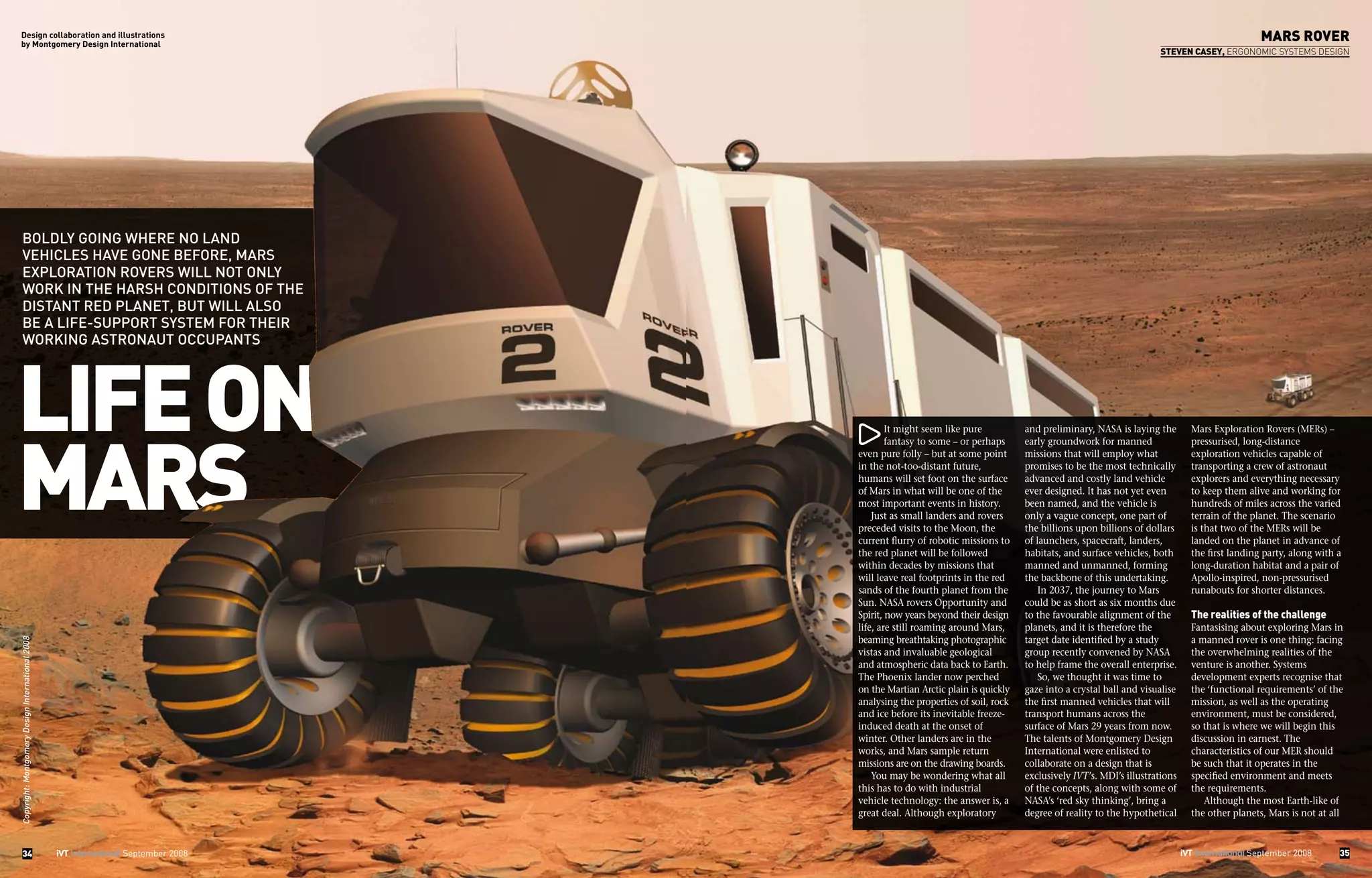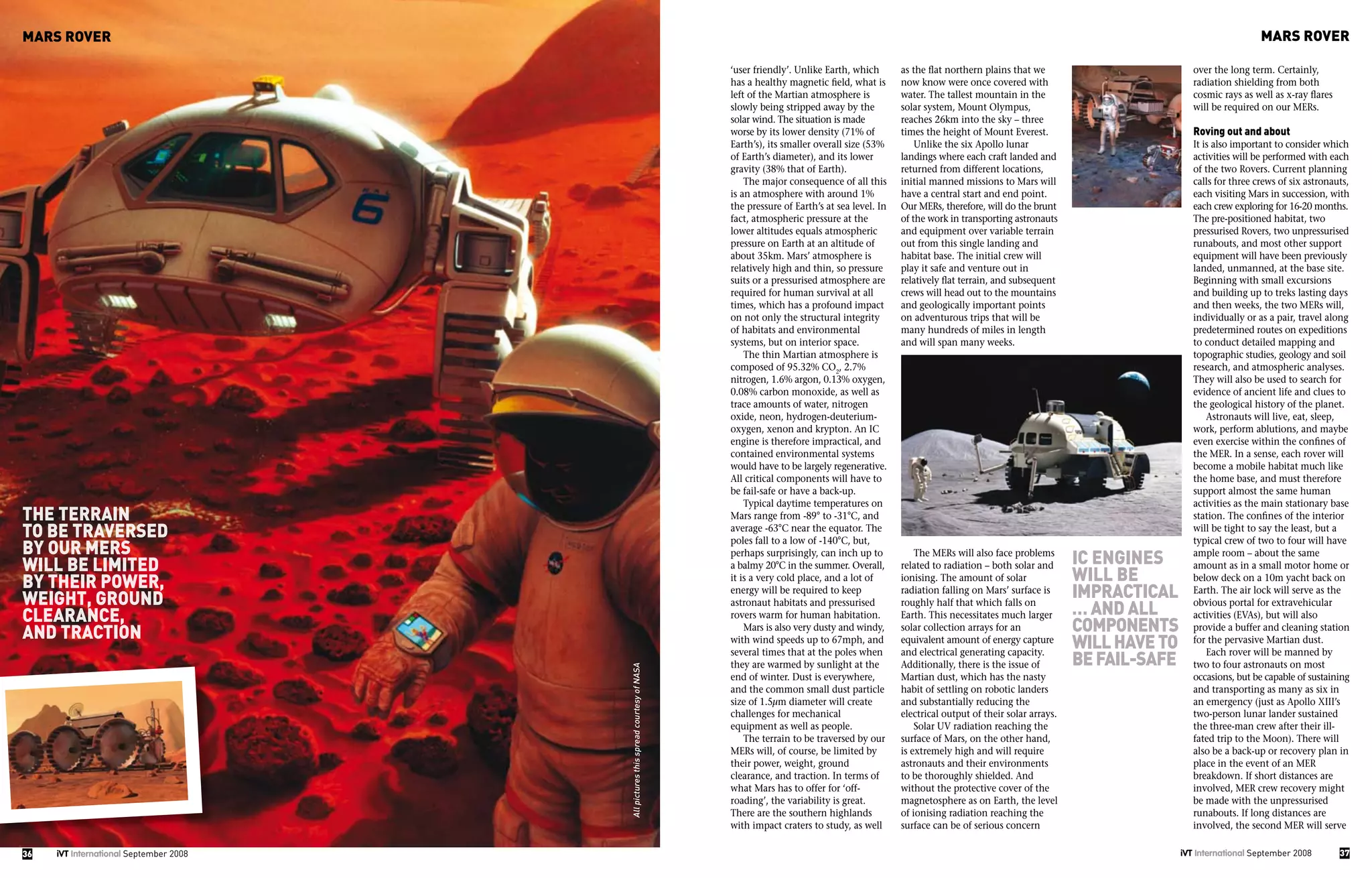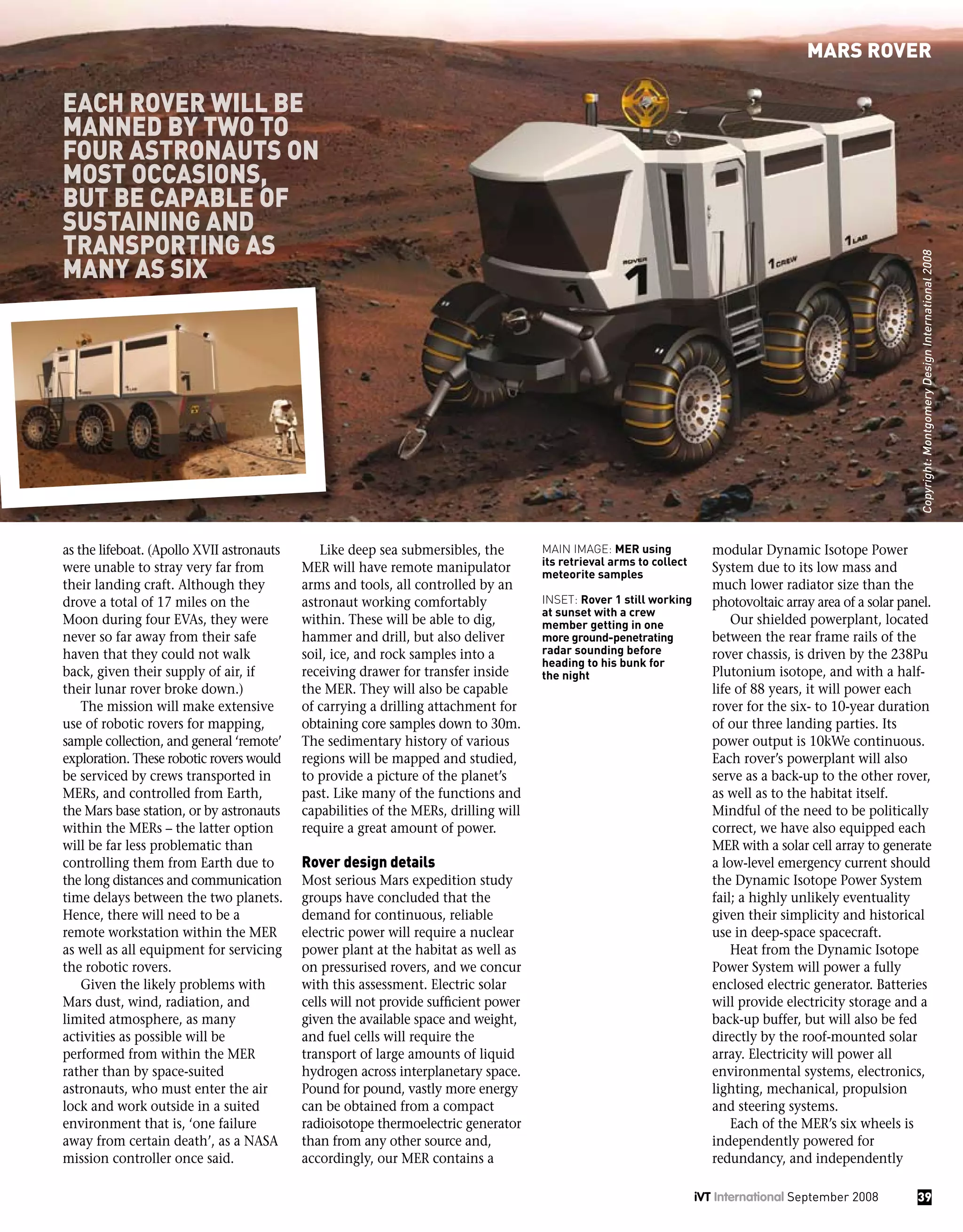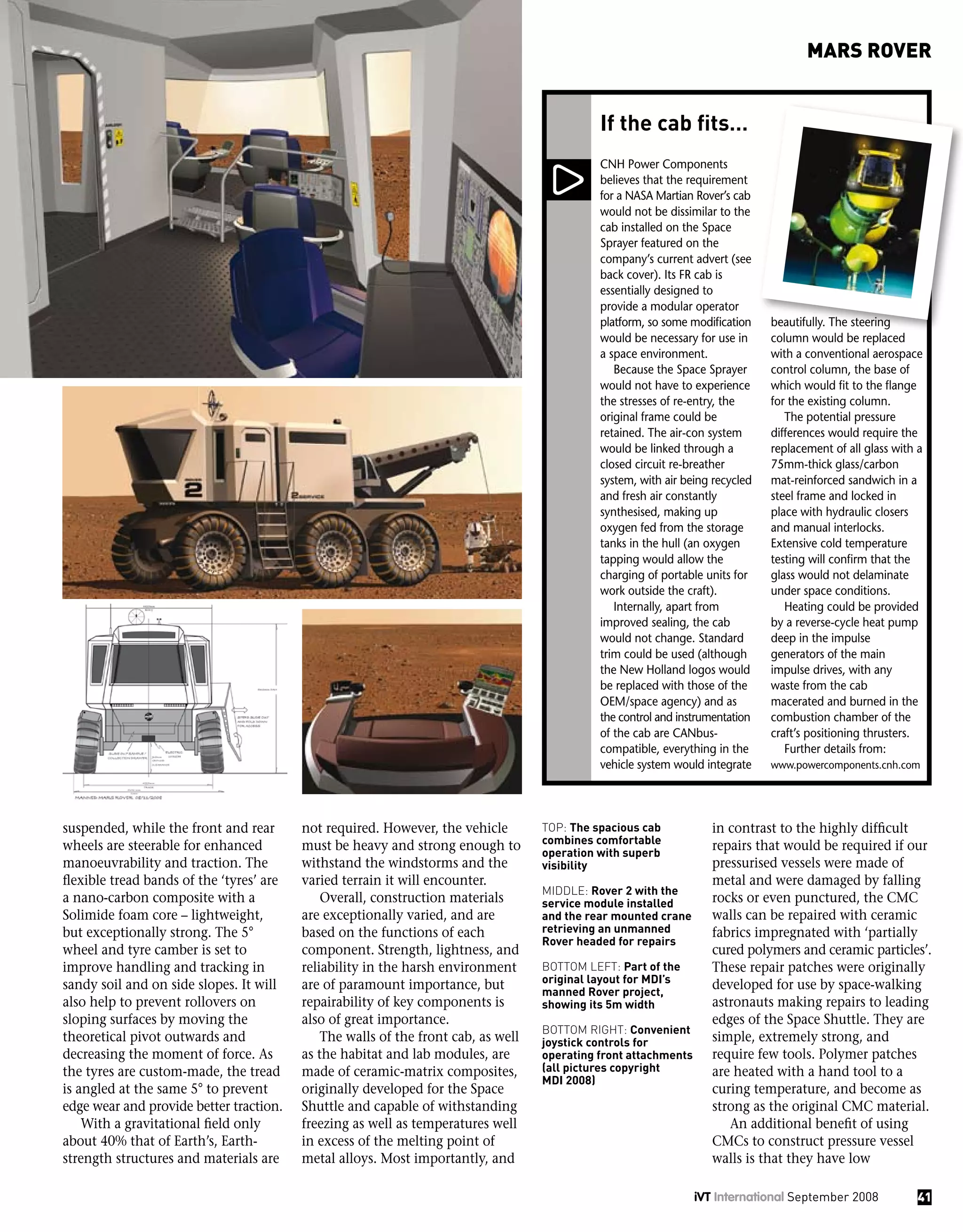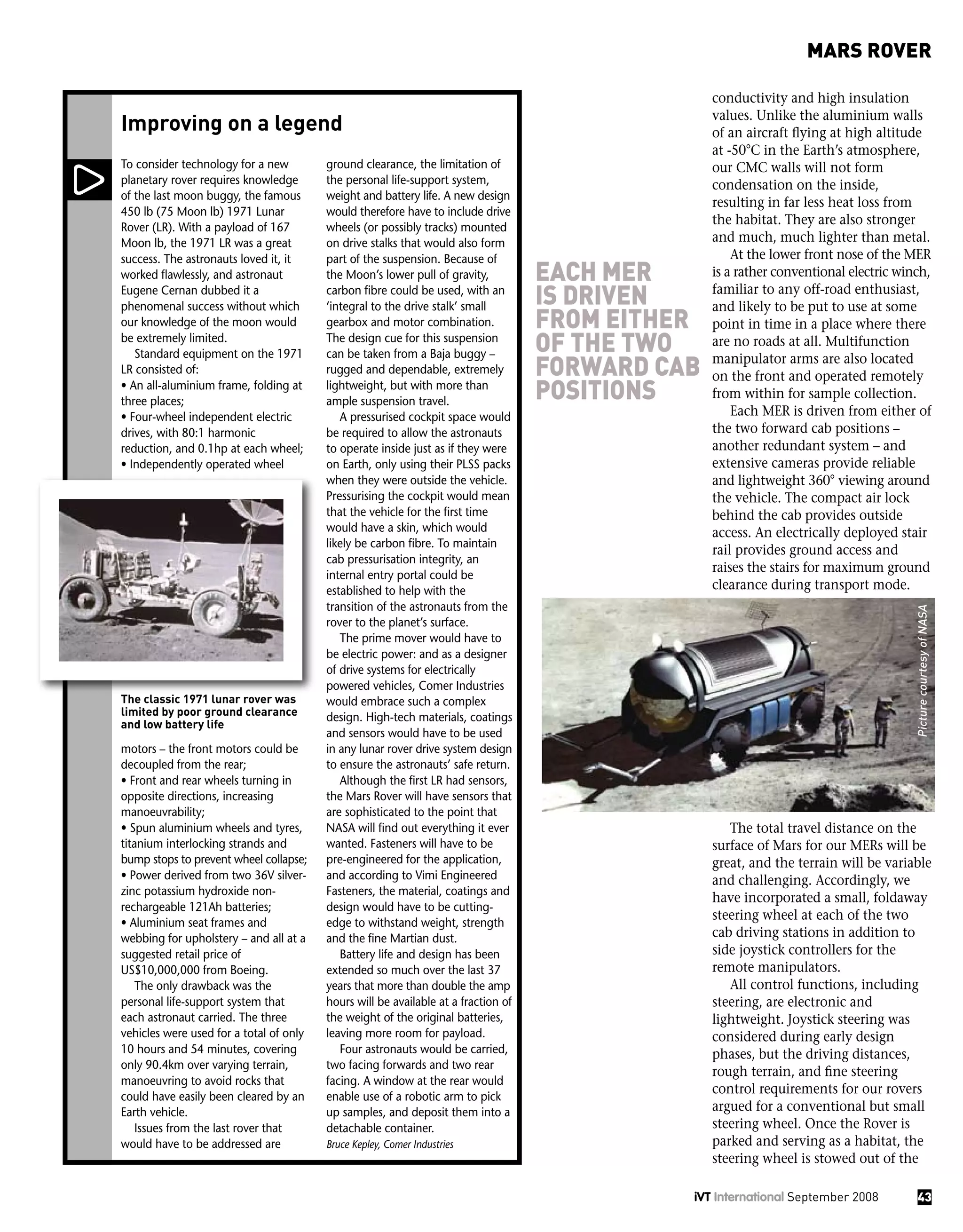The document discusses concepts and requirements for a Mars Exploration Rover (MER) that would transport astronauts across the surface of Mars. Some key points:
- The MER would be a pressurized, long-distance vehicle capable of transporting a crew of astronauts and sustaining them for hundreds of miles across Mars' terrain.
- It would need to operate in Mars' harsh environment, which has low atmospheric pressure, cold temperatures, dust storms, and radiation risks. Systems would need to be fail-safe or have backups.
- The MER would serve as a mobile habitat, allowing astronauts to live and work on long expeditions away from the main habitat base. It would carry supplies and have facilities for activities
